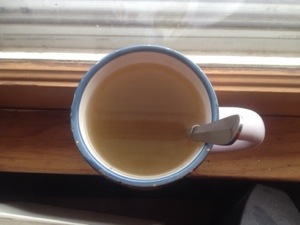Yaupon Holly (Ilex vomitoria) deserves a place on any homestead or permaculture farm. As the only native plant in the United States that contains caffeine, this valuable plant brings a lot to the table. A small to large evergreen shrub, yaupon holly is popular among landscapers as a foundation plant, and is commonly seen in both residential and commercial settings.
This is a good thing for homesteaders, because it means that yaupons are not only available to purchase at nurseries, but are relatively hardy and drought tolerant enough to survive these settings.
Hardy to zone 7, yaupon holly, and many other hollies, are commonly found as an understory shrub in hardwood forests and swamps in the southeastern United States. In the Gulf states, yaupons can make dense thickets in cleared areas acting as a pioneer species.
In the garden, yaupon holly is best situated in similar settings. Partial shade is best, but full sun to heavier shade can also be tolerated depending on variety and other factors. These small shrubs make great understory plants in a food forest or guild setting. Female plants produce small, inedible berries that provide winter forage for many native birds.
The leaves and small stems of yaupons contain caffeine, and can be toasted to make yaupon holly tea, a substitute for coffee similiar to yerba mate (Ilex paraguariensis) of South American fame.
The Native Americans of the southeastern United States used yaupon holly as both a tea, and a ritual beverage named black drink. This is where the vomitoria portion of Ilex vomitoria comes in, as after drinking profuse amounts of super concentrated black drink, which often included the inedible berries, many drinkers ended up vomiting and purging their systems.
But don’t worry, normal yaupon tea of just the leaves won’t make you throw up. In fact, I’m going to try a recipe of roasted dandelion root, chicory, and yaupon one day, which I imagine will make a pretty decent tea–very reminiscent of coffee. Not that I’ll ever be able to give up my morning ritual, but you never know. It would be nice to obtain some measure of self sufficiency as far as caffeinated beverages go–just ask the British.
Yaupon holly is easily pruned or encouraged into a hedge, and there are many cultivars available, from weeping yaupon to dwarf yaupon. For maximum caffeine production it needs plenty of nitrogen, so grow it near a nitrogen fixing species or two. An underplanting of clover (trifolium spp.) or vetch (vicia spp.) or an overstory of mimosa (albizia spp.) black locust (robinia psuedoacacia), or elaeagnus would work nicely.
Yaupon holly is a great plant. It is easy to care for, fits in nicely in a food forest, comes in many shapes and sizes, and produces one of the most valuable substances on earth. Caffeine. It definitely deserves a place on any homestead or forest garden, and its trimmings will pay great dividends of yaupon holly tea for years.

